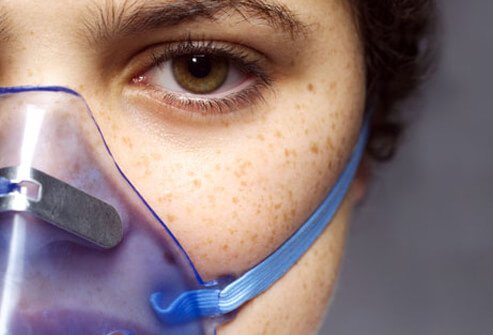
As a general proposition, occupational disease claims have evolved from the earliest dust disease claims to the proliferation of repetitive stress and “sick building” claims. As technology and medicine advance, the bases for claims become more expansive and more complicated. However, the same overriding concept, based upon the remedial nature of the New York State Workers’ Compensation Law still remains; the law exists to provide compensation for workers injured not only as a result of identifiable accidents but for those injured as a result of the nature of their work and the environments in which they labor.
The purpose of this lecture is to explore the bases to file a claim for an occupational disease, with an emphasis on claims for pulmonary injury. Emphasis shall be placed on the necessary elements essential for a successful prosecution of these often insidious and latent diseases along with an analysis of the myriad of pitfalls awaiting the practitioner. Although we shall provide case citations to illustrate various points, please understand that the list is not exhaustive. Instead, these materials should be used as a starting point for a case by case analysis when presented with actual claims.
Finally, we shall provide a brief primer on the medical aspects of various diagnoses, which shall include a description of symptoms, an explanation of the various diagnostic tools available to the medical professional and a brief explanation of medical terminology used in the reports that you shall encounter during the prosecution of these claims. In addition, there shall be an explanation of the concept of causal relationship from a medical standpoint with emphasis on the difficulties facing the medical professional in arriving at these conclusions.
DEFINITION OF OCCUPATIONAL DISEASE
Workers’ Compensation Law Section 3 : Section 3 provides a list of various hazardous substances along with the diseases associated with those occupations. Paragraph 29 is the “catch-all” inasmuch as all potential “exposures’ are said to be contemplated by the statute.
Paider v. Park East Movers, 19 N.Y. 2d 373 (1967) – An occupational disease is an ailment which is the result of a distinctive feature of the kind of work performed by a claimant and others similarly employed and it is not an ailment caused by the peculiar place in which a particular claimant happens to work nor is it caused by ordinary contact with a fellow employee. See also Detenbeck v. General Motors Corp., 309 N.Y. 558 (1956) and Goldberg v. Marcy Corp., 276 N.Y. 13 (1938) (all employees of a class are subject to exposure.)
**Aggravation of Pre-Existing Condition as an Occupational Disease: As a general proposition, the aggravation of a pre-existing disease or condition by occupational factors is not a sufficient basis for the establishment of a claim. However, there is an exception: Ochsner v. New Venture Gear, 273 A.D. 2d 715 (2000) – pre-existing condition is aggravated to extent that it becomes disabling. See also Strouse v. Endicott Village, 50 A.D.2d 635 (1975). A helpful way to determine is if a dormant or asymptomatic condition becomes symptomatic and disabling.
** Do not confuse non-occupational conditions in a work place that aggravate pre-existing conditions as compensable. Mack v. Rockland County,71 N.Y.2d 1008 (1988) (cigarette smoke not an occupational factor.)
** Some of these claims may be treated as accidents (to be discussed.)
Workers’ Compensation Law Section 15 – This section contains criteria for payments of disability where claimant has sustained a partial/total loss of wage earning capacity. Recently, the significance that this section has played is the discussion of voluntary withdrawal from the labor market, where it has been significant in all claims for disability.
NOTICE AND STATUTE OF LIMITATIONS
As a general proposition, there are limited notice requirements as well as the standard two-year statute of limitations requirement that are applicable in accident cases. However, the insidious and long term effects of exposure to deleterious dusts, fumes and chemicals present problematic circumstances which cannot be dealt with without the flexibility that is inherent in the Workers’ Compensation Law.
Workers’ Compensation Law Sections 18 & 45 – Notice
Although an injured worker is required to give notice of an accident to his/her employer within 30 days of the accident pursuant to Section 18, Section 45 expands the time period within which notice is to be given. Specifically, in the case of an occupational disease, notice is to be given within 2 years after the disablement or after the claimant knew or should have known that the disease is due to the nature of employment, whichever is later.
**Last injurious exposure (if someone has ongoing exposure, then he/she can still sustain injury.)
**Along with the standard exceptions to late notice, Section 45 effectively negates any strict notice requirement.
**Nature of disease would otherwise make notice virtually impossible.
Workers’ Compensation Law Sections 28, 38 & 42 – Date of Disablement
Section 28 generally requires an injured worker to file a claim for compensation within two years of the date of accident. However, this section specifically expands the two year period to commence from the date that the claimant had or should have had knowledge of the nature of his/her condition as related to his/her occupation and date of disablement. This expansive language essentially leads to a limitless statute of limitations.
Section 38 – Disablement = Accident: Generally, disablement from an occupational disease is deemed equivocal to an accident. LaGattuta v. Baldwin Ehret-Hill, Inc., 36 A.D. 2d 887 (1971.)
Section 42 – permits the Board to exercise broad discretion in determining the date of disablement and is to be based upon substantial evidence. Patterson v. Long Island Jewish Medical Center, 296 A.D.2d 774 (2002.)
**Factors used to determine date of disablement are date of diagnosis, date of first treatment, last day worked.
**Liberal interpretation.
**Loss of time from work not necessarily same as disablement.
PRESUMPTIONS
The concept of the presumption plays a major role in the analysis of many compensation claims. Occupational disease claims rely on these presumptions as well as specifically defined presumptions. As previously discussed, Section 3 provides a list of occupations along with related diseases.
Workers’ Compensation Law Section 21 – An accident which occurs in the course of employment is also presumed to arise out of the employment. The presumption must be rebutted by substantial evidence.
Workers’ Compensation Law Section 47 – Section 3 Occupations + Section 3 Diseases = Presumption of Causal Relationship. Section 47 permits the presumption that the disease was due to the nature of the employment if the work process was the kind of work the employee did immediately before the disease. Stein v. New York Times, 78 A.D.2d 757 (1980.) – Continuing statutory presumption that disease is work-related.
**Sixty-Day Rule – Sixty days of exposure is presumed to be an injurious exposure.
**Medical opinion still required.
** Leggiero v. Kings Electronic Co., 2 A.D.2d 945 (1956) – Presmption exists even if others do not contract disease.
AWARDS
Although Section 15 of the Workers’ Compensation Law provides for awards for causally related disability, there is an additional statutory provision that provides for the loss of wage earning capacity an injured worker may encounter when disease forces the worker to find employment in a different environment.
Workers’ Compensation Law Section 39 – Where a claimant’s disease compels him/her to seek employment in a non-injurious or “healthful” environment, an award for reduced earnings is appropriate.
**Defense to claim of Voluntary Withdrawal.
DUST DISEASES V. NON-DUST DISEASES
The legal differentiation between dust diseases and non-dust diseases is based upon the pathological distinction between pneumoconiosis, which occur when the inhalation of dust particles cause injury/changes to the essential functioning aspects of the lungs (parenchyma) and those diseases which affect the lining (pleura) of the lungs.
Workers’ Compensation Law Section 15-8(ee) – Provides for relief from the Special Funds Conservation Committee for dust diseases (asbestosis v. asbestos-related pleural disease.) Fama v. P&M Sorbara (Decision rendered by the Third Department 3/16/06) – no requirement to file two separate claims.
**Dust diseases are generally more serious.
Workers’ Compensation Law Section 44 & 44-a – Last injurious exposure shall result in liability except in situation where the injury is a dust disease.
**Tremendous source of litigation.
**Apportionment permitted among subsequent employers for exposures that occur subsequent to the contraction of the disease.
OCCUPATIONAL DISEASE V. ACCIDENTAL INJURY
Workers’ Compensation Law Sections 2 & 48 – There are instances where a disease/injury is contracted based upon an injurious exposure that is not endemic to a workers’ employment environment. Engler v. U.P.S., 1 A.D.3d 854 (2003.) see also Martin v. Fulton City School District, 300 A.D.2d 901 (2002.) Furthermore, there are cases where the claim may be analyzed as an accident and an occupational disease. Farcasin v. PDG Inc., 286 A.D.2d 840 (2001.)
**A single exposure can still result in an occupational disease (uncommon in dust diseases.)
**History essential.
**Sick building claims – Dando v. Binghamton Board of Ed., 111 A.D.2d 1060 (1985.) (Claim by teacher exposed to construction dust not an occupational disease.)
**Beware of pre-existing conditions.
** Exposure to asbestos as Claim. Gerardi v. Nuclear Utility Services Inc., 566 N.Y.S.2d 1002 (1991.) No need to have injury to file (testing and history.)




